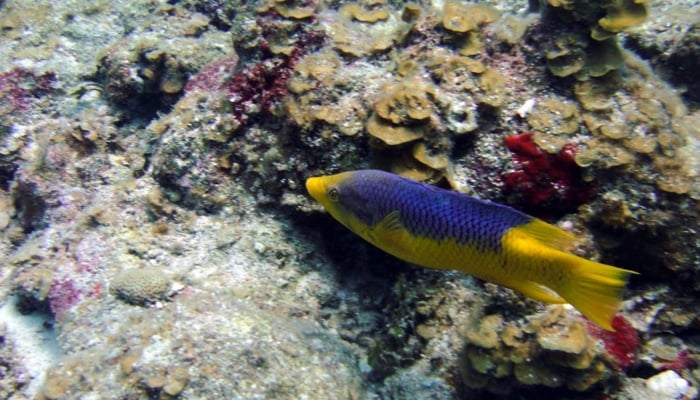Skin used as eyes: Researchers discover fish that changes colour even 'after death'
Scientists find that light receptors, called SWS1, underneath chromatophore, may be involved in the process
August 27, 2023

Scientists have discovered in their new study a kind of fish called hogfish — Lachnolaimus Maximus — that can adapt to the colour in its surroundings even after it dies.
This study enabled experts to make sense of the evolution, habitat and other behaviours of the hogfish fish alongside their ability to adapt quickly.
Sonke Johnsen, an author of the study said: "In a way they can tell the animal what its skin looks like, since it can’t really bend over to look."
There are a number of sea creatures that can change their colour which helps them adjust as per the environmental temperature changes, attracting mates and providing camouflage, said researchers.
According to the researchers including those from the University of North Carolina, Wilmington in the US, cells on their bodies called chromatophores, contain pigments, crystals or tiny reflective plates, enabling these species to make changes in their colours rapidly.
The reef-dwelling fish — commonly found in the Atlantic Ocean from North Carolina to Brazil — does this to camouflage and escape predators, or maybe for social signalling.
Scientists were surprised to see that activity of colour changes even after their death.
In the new research published in the journal Nature Communications, experts used microscopy to determine the impact of light on different parts of the fish.
They found that light receptors, called SWS1, underneath the chromatophore, may be involved in the process.
Cells are sensitive to the light shining through colours expressed by chromatophores, specifically the wavelength of light that is present in their coral reef habitat, researchers said.
They also maintained that these receptors provide feedback to the fish on where and how changes are taking place in different parts of their skin.
Scientists wrote in the study: "By examining the morphology, physiology, and optics of dermal photoreception in hogfish [Lachnolaimus Maximus], we describe a cellular mechanism in which chromatophore pigment activity [i.e., dispersion and aggregation] alters the transmitted light striking SWS1 receptors in the skin."
"The animals can literally take a photo of their own skin from the inside. In a way they can tell the animal what its skin looks like, since it can't really bend over to look," Dr Johnsen explained.
"Just to be clear, we’re not arguing that hogfish skin functions like an eye," Dr Schweikert said, adding that "eyes are capable of more than just detecting light."











